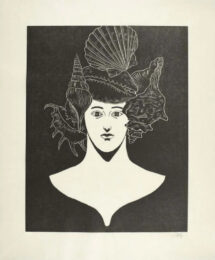General rules for avoiding fraud in the art market
If it seems too good to be true, it almost certainly is.
Back when I was studying for my doctorate, I lived near a muffin shop. Every day, during the half hour before closing time, they sold muffins at half price. This made sense: a good muffin shop doesn’t sell day-old muffins, so they wanted to do anything they could to get rid of their inventory before closing. A similar principle applies to clothing stores that want to clear their shelves for a new style or a coming season. In both cases, reducing prices is completely logical.
This logic, of course, doesn’t apply to works by important artists. Signed prints by Chagall, Miró, Picasso, Warhol, Dalí, Johns, Hockney, Hirst, and Matisse sell for at least $1,000 (and often far more) at established auction houses like Sotheby’s and Christie’s. Gallery prices are usually considerably higher. So why would anyone offer these items for far less?
And also, where on Earth do they buy these prints? I mean, if they’re selling “signed Picassos” for $200, they must be buying them for even less! From whom?
An ignorant buyer is an easy victim.
Buying muffins or clothes is relatively simple: if you get a stale muffin or a defective pair of pants, you’ll probably diagnose the problem right away, and you’ll be able to get your money back. And even if you can’t, the amount of money involved is unlikely to be significant.
But buying art requires a good deal of specialized knowledge. While that might seem obvious, people often don’t think about it. Most people who buy fake prints don’t find out about their mistakes until years or even decades later, when they decide to sell. By then, in most cases, it is impossible to get a refund.
Consult the catalogue raisonné.
The single best source for information on any specific printmaker is the catalogue raisonné (the plural is “catalogues raisonnés”) of his prints. A catalogue raisonné is a complete, detailed catalogue of the artist’s prints, with all of the relevant information you might need to identify them. While many catalogues raisonnés are expensive, they are usually available for consultation at good public and university libraries. To find the catalogue raisonné of the artist you are interested in, go to the Print Council of America’ssearch page.
Obviously, there are many minor artists for whom catalogues raisonnés do not exist. Most art fraud, however, involves major artists. In the case of prints, Picasso, Chagall, Miró, Matisse, Warhol, and Dalí seem to be the favourites.
If someone selling a print by a major artist makes no reference to the catalogue raisonné, he is probably either an incompetent or a crook. Or both. But there are some crooks who do cite catalogues raisonnés, often in deceitful ways.
If you’re not sure, don’t buy.
People often bring me works of art for authentication. If I tell them it’s a fake, they often ask, “Can you prove it?” Sometimes I can prove it; sometimes I can’t. But the very fact that they ask this question shows that they don’t understand how the art market works.
The question is NOT: “Can you prove it’s fake?”
The question is: “Can you prove it’s authentic?”
Crooks make their living because people are ready to take too much on faith. It is not the buyer’s responsibility to prove that an object is fraudulent; it is the seller who should demonstrate its authenticity. Unless and until the buyer is convinced, he should keep his money in his pocket.
Dr William Cole, a recognized expert in art connoisseurship, is director of the Sylvan Cole Gallery. His articles have appeared in Print Quarterly, Art in Print, Word & Image, and other leading journals. His most recent book is a catalogue raisonné of the illustrated books and print portfolios of Masafumi Yamamoto.


